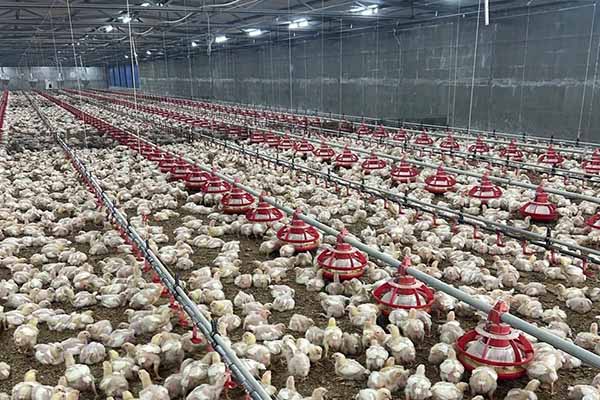Brooding Cages for Broiler Chickens and Baby Layer Cages: A Comprehensive Guide
Time : 2025-06-30
Brooding is a critical phase in the life cycle of chickens, especially in the case of broiler chickens and baby layer chickens. The environment in which these chicks are raised during the initial days of life can significantly impact their growth, health, and overall productivity. This article delves into the importance of brooding cages for broiler chickens and baby layer chickens, providing insights into the various types of cages available, their design considerations, and how they contribute to the successful management of the brooding process.
Introduction to Brooding Cages
Brooding cages are specifically designed to provide a controlled environment for chicks during their first few weeks of life. These cages help in maintaining optimal temperature, humidity, and lighting conditions, which are crucial for the growth and development of young chickens. The choice of brooding cage can vary based on the type of chicken, the size of the operation, and the specific needs of the farmer.
Broiler Chickens
Broiler chickens are bred for their meat, and they grow rapidly. Brooding cages for broiler chickens are designed to accommodate the high density of chicks that are typically raised in these systems. These cages are often made from metal or plastic and are equipped with features that ensure the health and well-being of the chicks.
Baby Layer Chickens
Baby layer chickens are raised for egg production. The brooding cages for these chickens are designed to promote a calm and stress-free environment that supports the transition from chick to adult bird. These cages are often larger and more spacious than those for broiler chickens.
Key Features of Brooding Cages
The design of brooding cages plays a vital role in the success of the brooding process. Here are some of the key features that are commonly found in brooding cages for broiler chickens and baby layer chickens:
1. Temperature Control
The ability to maintain a constant and appropriate temperature is critical for the chicks’ survival and development. Brooding cages are equipped with heaters that can be adjusted to the specific temperature requirements of the chicks at different stages of growth.
2. Feeding Systems
Automated feeding systems are commonly integrated into brooding cages. These systems ensure that the chicks have access to an adequate supply of food without the need for constant human intervention.
3. Watering Systems
Watering systems must be reliable and accessible to the chicks at all times. Brooding cages may include nipple drinkers or bell-type drinkers that are designed to prevent water wastage and to provide a consistent supply of water.
4. Floor Type
The floor of the brooding cage can be solid or slatted. Solid floors are less expensive but can lead to increased ammonia levels due to waste buildup. Slatted floors help reduce ammonia levels and allow for better air circulation.
5. Access Doors
Access doors are essential for cleaning, feeding, and monitoring the chicks. These doors should be easy to open and close without causing stress to the chicks.
Types of Brooding Cages
There are several types of brooding cages available for broiler chickens and baby layer chickens:
1. Floor Cages
Floor cages are designed to be placed directly on the floor. They are often used in large-scale operations and are suitable for broiler chickens.
2. Wire Cages
Wire cages provide good air circulation and can be stacked for efficient use of space. They are suitable for both broiler chickens and baby layer chickens.
3. Crate Cages
Crate cages are typically used for baby layer chickens and are characterized by their enclosed space, which promotes a quieter and more comfortable environment for the chicks.
Design Considerations
When designing or selecting brooding cages, several factors should be considered:
1. Space Requirements
Ensure that the cage size is appropriate for the number of chicks being raised. Overcrowding can lead to health issues and poor growth rates.
2. Ventilation
Proper ventilation is crucial for maintaining good air quality and reducing the risk of respiratory diseases.
3. Heating
A reliable heating system is essential for maintaining the optimal temperature for the chicks.
4. Cost-Effectiveness
The cost of the brooding cages should be balanced against the benefits they provide in terms of chick health and productivity.
Conclusion
Brooding cages are a fundamental component of the broiler chicken and baby layer chicken production process. The right choice of cage can significantly impact the chicks’ growth, health, and overall performance. By considering the key features, types, and design considerations, farmers can create an optimal brooding environment that supports the successful development of their chickens.












